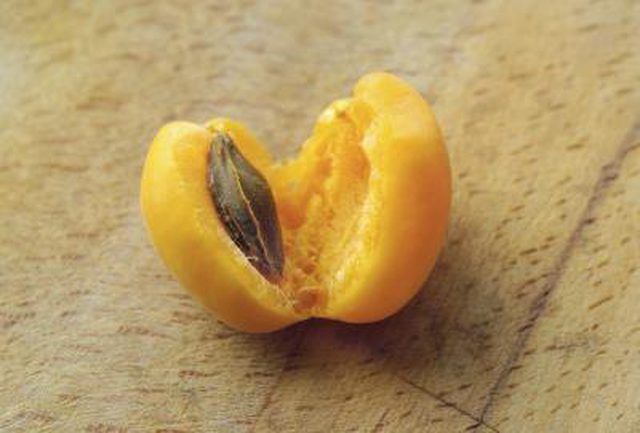Bulbs
Flower Basics
Flower Beds & Specialty Gardens
Flower Garden
Garden Furniture
Garden Gnomes
Garden Seeds
Garden Sheds
Garden Statues
Garden Tools & Supplies
Gardening Basics
Green & Organic
Groundcovers & Vines
Growing Annuals
Growing Basil
Growing Beans
Growing Berries
Growing Blueberries
Growing Cactus
Growing Corn
Growing Cotton
Growing Edibles
Growing Flowers
Growing Garlic
Growing Grapes
Growing Grass
Growing Herbs
Growing Jasmine
Growing Mint
Growing Mushrooms
Orchids
Growing Peanuts
Growing Perennials
Growing Plants
Growing Rosemary
Growing Roses
Growing Strawberries
Growing Sunflowers
Growing Thyme
Growing Tomatoes
Growing Tulips
Growing Vegetables
Herb Basics
Herb Garden
Indoor Growing
Landscaping Basics
Landscaping Patios
Landscaping Plants
Landscaping Shrubs
Landscaping Trees
Landscaping Walks & Pathways
Lawn Basics
Lawn Maintenance
Lawn Mowers
Lawn Ornaments
Lawn Planting
Lawn Tools
Outdoor Growing
Overall Landscape Planning
Pests, Weeds & Problems
Plant Basics
Rock Garden
Rose Garden
Shrubs
Soil
Specialty Gardens
Trees
Vegetable Garden
Yard Maintenance
How to Start a Tree From an Apricot Seed
How to Start a Tree From an Apricot Seed. Growing to 25 feet tall with pink or white early-spring blossoms, the apricot (Prunus armeniaca) produces succulent golden fruits in U.S. Department of Agriculture plant hardiness zones 5 through 7. If you take seeds from a grafted or hybrid variety, the seedlings you grow from them may not look or...

Growing to 25 feet tall with pink or white early-spring blossoms, the apricot (Prunus armeniaca) produces succulent golden fruits in U.S. Department of Agriculture plant hardiness zones 5 through 7. If you take seeds from a grafted or hybrid variety, the seedlings you grow from them may not look or produce like the parent tree. Don't harvest seeds from an early-season apricot either, as they often fail to germinate. For the best results, choose a mid- to late-season type that was grown from seed itself and isnít close enough to other trees in the same genus to be pollinated by them.
Things You'll Need
Paring knife
Vegetable brush
Newspapers
Nutcracker or vise
Glass jar with screw-on lid or zip-top sandwich bag
Peat moss
Shovel
Screening or hardware cloth
Preparing Apricot Seeds
Slice open apricots that are fully ripe or overripe and pry out the pits. Scrub any remaining flesh from the pits with a vegetable brush and spread them on newspapers for about three hours until their surfaces are dry.
Break the pits open by exerting pressure, with a nutcracker or vise, on their seamed sides. Extract the almond-shaped seeds.
Leave the seeds on the newspapers for a few more hours until their surfaces are dry before storing them in a covered jar or zip-top sandwich bag in the refrigerator if you wish to put off their stratification period. If you plan to start that process right away, soak the seeds overnight in a container of lukewarm water.
Starting Apricot Seeds Indoors
Squeeze damp peat moss enough to remove any excess water from it and place a couple handfuls of that moss in a glass jar or sandwich bag. Drain the presoaked seeds and add them to the moss, mixing them in thoroughly. Cover the jar with a screw-on lid or zip the bag shut.
Cold-stratify the seeds by placing the jar or bag in the refrigerator, where the temperature should be above 32 degrees Fahrenheit and no higher than 45 F. Check frequently for any signs of roots appearing in the peat. Apricot seeds generally begin to germinate in four to six weeks.
Pot the sprouting seeds if the weather won't allow you to plant them outdoors. Place one seed in each 4-inch pot of potting soil, with the root end down and the opposite tip of the seed near the surface of the soil. Keep the seedlings on a sunny windowsill, under grow-lights or in a greenhouse until you are ready to transplant them into the garden.
Starting Apricot Seeds Outdoors
Dig a planting bed in fall on a site with full sun and light loamy soil. Draw a furrow in the soil that is two times deeper than the length of your seeds. Sow the presoaked seeds in the furrow about 6 inches apart and fill that furrow with soil. Spread another 1 inch of sand over the planting row to keep the surface of the soil from becoming crusty.
Cover the row with a length of screen or hardware cloth. Tuck the edges of the screen or hardware cloth several inches deep into the soil on all sides to prevent animals from digging up the seeds.
Watch for signs of germination in the spring. When you see little trees beginning to pop up, remove the screen or hardware cloth to allow them to grow before you transplant them.
Tips & Warnings
If you don't want to bother extracting the seeds, you can stratify the pits instead, but germination will take longer.
The seeds, twigs and wilted leaves of apricot trees are toxic, so keep these materials out of reach of children and pets.